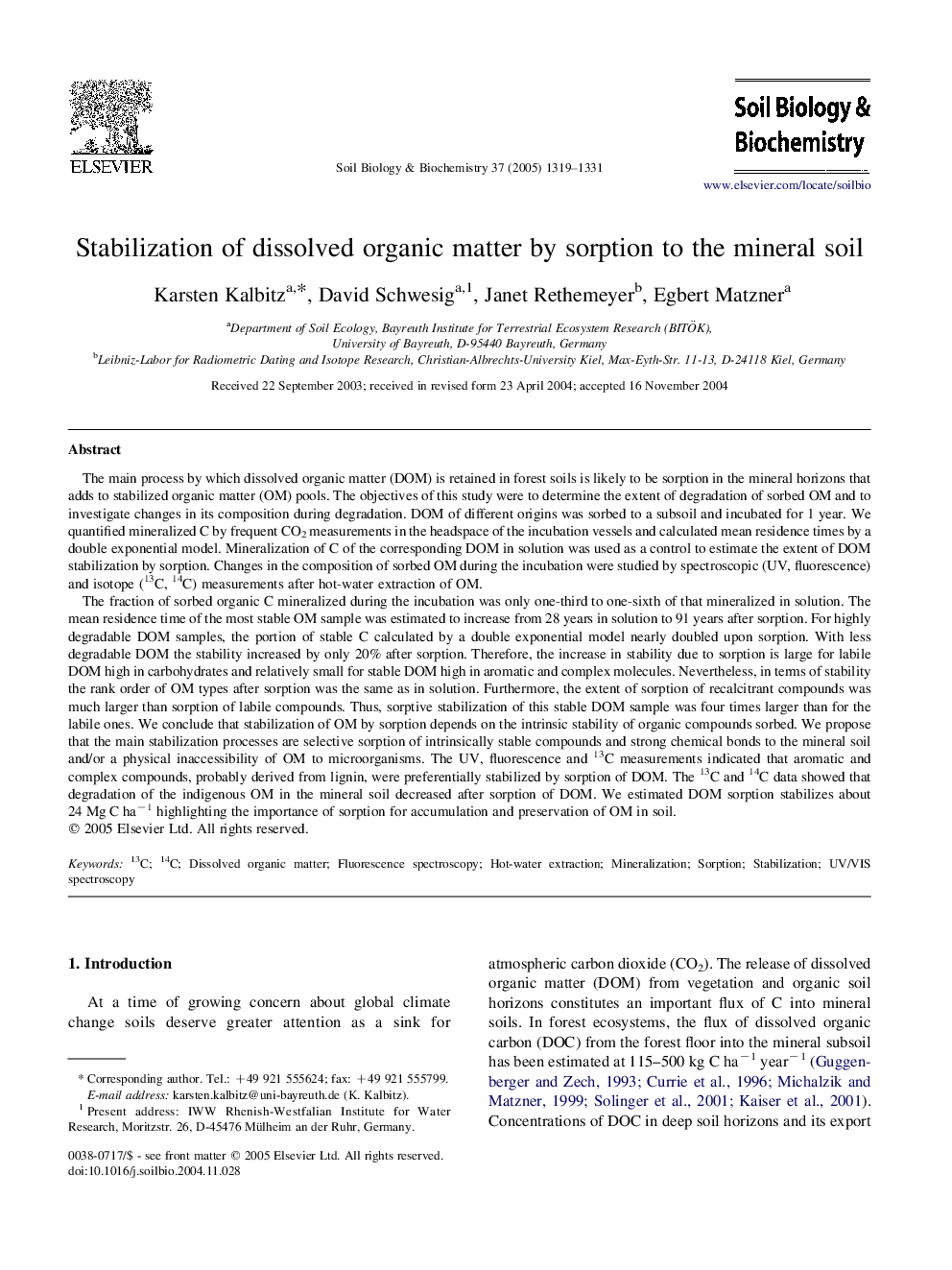| Article ID | Journal | Published Year | Pages | File Type |
|---|---|---|---|---|
| 10846153 | Soil Biology and Biochemistry | 2005 | 13 Pages |
Abstract
The fraction of sorbed organic C mineralized during the incubation was only one-third to one-sixth of that mineralized in solution. The mean residence time of the most stable OM sample was estimated to increase from 28 years in solution to 91 years after sorption. For highly degradable DOM samples, the portion of stable C calculated by a double exponential model nearly doubled upon sorption. With less degradable DOM the stability increased by only 20% after sorption. Therefore, the increase in stability due to sorption is large for labile DOM high in carbohydrates and relatively small for stable DOM high in aromatic and complex molecules. Nevertheless, in terms of stability the rank order of OM types after sorption was the same as in solution. Furthermore, the extent of sorption of recalcitrant compounds was much larger than sorption of labile compounds. Thus, sorptive stabilization of this stable DOM sample was four times larger than for the labile ones. We conclude that stabilization of OM by sorption depends on the intrinsic stability of organic compounds sorbed. We propose that the main stabilization processes are selective sorption of intrinsically stable compounds and strong chemical bonds to the mineral soil and/or a physical inaccessibility of OM to microorganisms. The UV, fluorescence and 13C measurements indicated that aromatic and complex compounds, probably derived from lignin, were preferentially stabilized by sorption of DOM. The 13C and 14C data showed that degradation of the indigenous OM in the mineral soil decreased after sorption of DOM. We estimated DOM sorption stabilizes about 24 Mg C haâ1 highlighting the importance of sorption for accumulation and preservation of OM in soil.
Keywords
Related Topics
Life Sciences
Agricultural and Biological Sciences
Soil Science
Authors
Karsten Kalbitz, David Schwesig, Janet Rethemeyer, Egbert Matzner,
